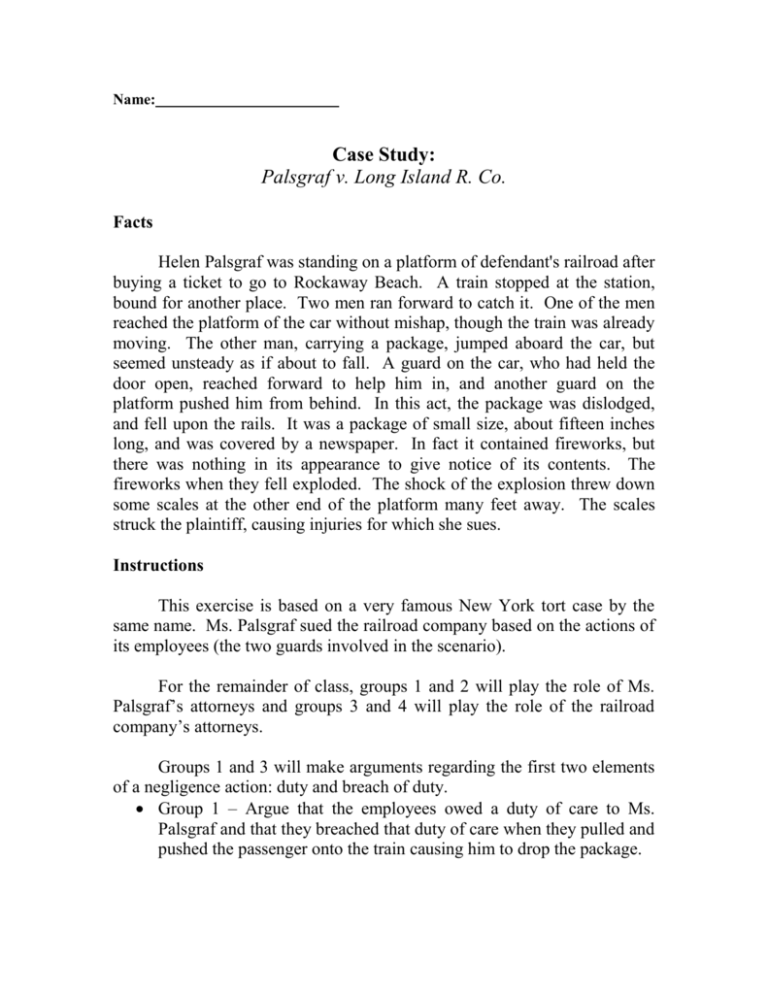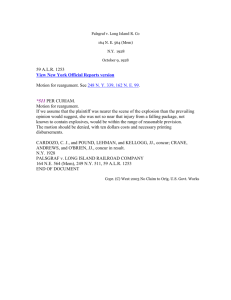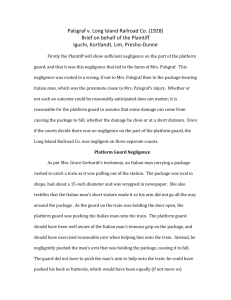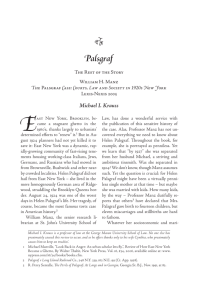Case Material
advertisement

Name: Case Study: Palsgraf v. Long Island R. Co. Facts Helen Palsgraf was standing on a platform of defendant's railroad after buying a ticket to go to Rockaway Beach. A train stopped at the station, bound for another place. Two men ran forward to catch it. One of the men reached the platform of the car without mishap, though the train was already moving. The other man, carrying a package, jumped aboard the car, but seemed unsteady as if about to fall. A guard on the car, who had held the door open, reached forward to help him in, and another guard on the platform pushed him from behind. In this act, the package was dislodged, and fell upon the rails. It was a package of small size, about fifteen inches long, and was covered by a newspaper. In fact it contained fireworks, but there was nothing in its appearance to give notice of its contents. The fireworks when they fell exploded. The shock of the explosion threw down some scales at the other end of the platform many feet away. The scales struck the plaintiff, causing injuries for which she sues. Instructions This exercise is based on a very famous New York tort case by the same name. Ms. Palsgraf sued the railroad company based on the actions of its employees (the two guards involved in the scenario). For the remainder of class, groups 1 and 2 will play the role of Ms. Palsgraf’s attorneys and groups 3 and 4 will play the role of the railroad company’s attorneys. Groups 1 and 3 will make arguments regarding the first two elements of a negligence action: duty and breach of duty. Group 1 – Argue that the employees owed a duty of care to Ms. Palsgraf and that they breached that duty of care when they pulled and pushed the passenger onto the train causing him to drop the package. Group 3 – Argue that the employees either did not owe a duty of care to Ms. Palsgraf or that they did owe her a duty of care, but that their actions did not breach that duty of care. Questions to keep in mind: o What was the duty of care the employees owed to Ms. Palsgraf? o What would the reasonable person do in this scenario? How likely was it that harm would result from helping the passenger board the train? How serious would the harm be if it occurred? How much of a burden would it be on the employees to avoid the harm? o Did the employees’ actions meet the standard of care? Groups 2 and 4 will make arguments regarding the element of causation (both cause in fact and proximate cause). For purposes of this exercise, we will not discuss damages, but we can assume that Ms. Palsgraf was physically injured by the falling scales. Group 2 – Argue that the exploding package was the cause in fact of Ms. Palsgraf’s injuries and that the law should also view it as the proximate cause of her injuries (in order to allow Ms. Palsgraf to recover money damages). Group 4 – Argue that the exploding package was not the cause in fact of Ms. Palsgraf’s injuries or that it was the cause in fact of her injuries, but that the law should not view it as the proximate cause of her injuries (thus barring Ms. Palsgraf from recovering money damages). Questions to keep in mind: o What does the “but for” test tell us about this situation? o Was Ms. Palsgraf’s injury foreseeable? All groups should discuss the case with their teammates and formulate their most compelling arguments for why their client should win. When preparation time is over, each group will send a representative to the front of the class to present their arguments (the representative should be somebody different from the representative during the short scenarios).









